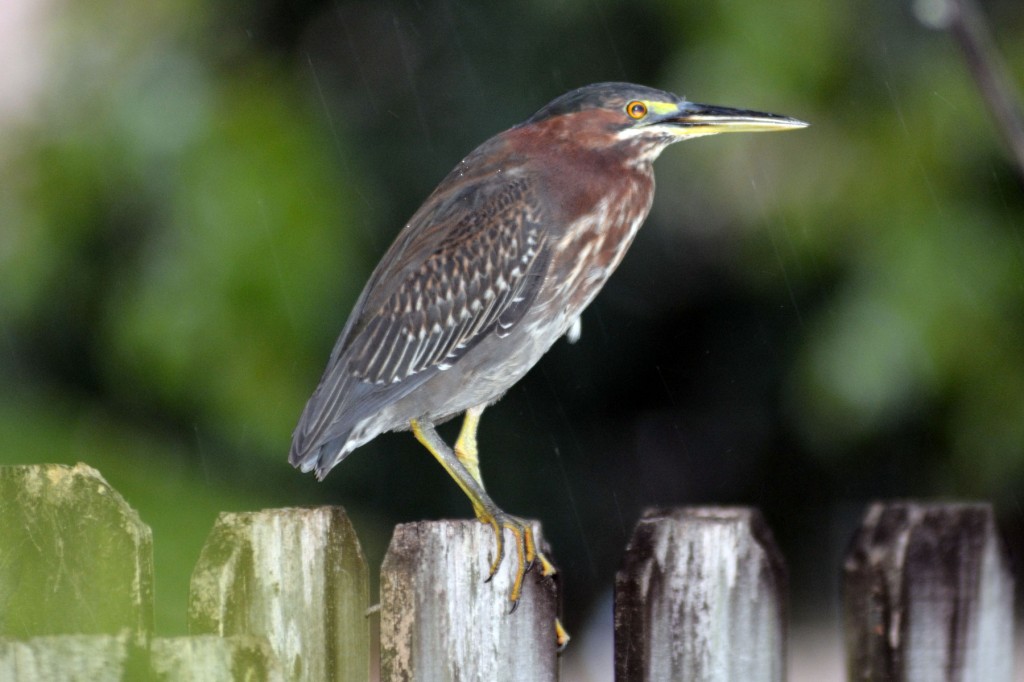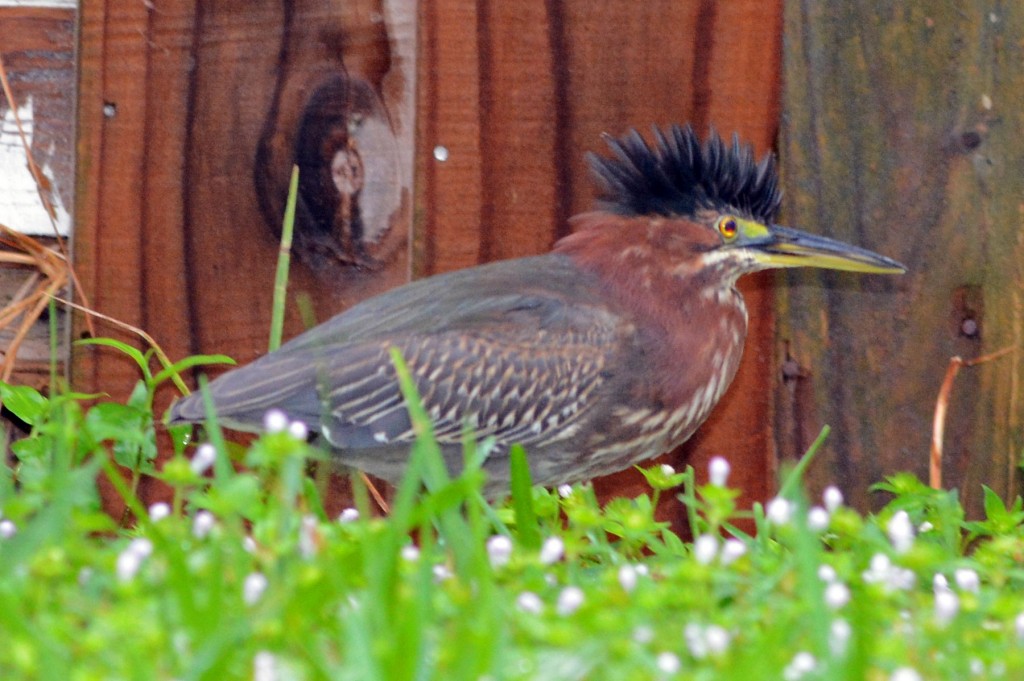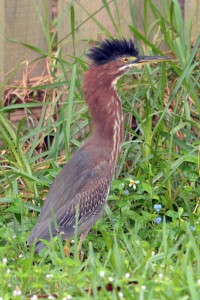The week before Thanksgiving continues to be busy at the homestead. On Tuesday and Wednesday—both rainy, windy mornings—we had a special visit from a new bird for the yard: Butorides virescens, the Green Heron. It’s a nice little marsh bird, but rather uncommon here so far from the nearest canal or other permanent wetland. We felt quite favored to have it drop in. I managed to get a couple of decent (if you squint, you almost can’t see how blurry they are) snapshots before herding the kids into the van for school drop off:

These birds are somewhat awkward looking, don’t you think? And when they raise their crest, they look even more, um, interesting:

And then when they stretch their necks out? Fuggedaboutit:

Each time this bird has appeared, I’ve seen it through the kitchen windows near the house and then been forced to open the glass doors, thus scaring it a bit farther away than I’d like and making it skittish and hard to approach. And since my good telephoto is just at the limit of my ability to hold by hand, I just can’t quite get that perfect shot. But if it keeps coming, I’ll keep trying!
Etymology
The etymology of the taxonomic name is uncertain. Butorides, according to my copy of Choate, is apparently a coined modern Latin word probably related to butio, “bittern,” with -ides (from Gr. eidos) meaning “resembling.” Virescens, of course, is “growing or becoming green.” (An alternative explanation is that butor comes from bos (cow) and taurus (bull), in which case the Green Heron resembles a bull-cow. You see why I don’t always follow Cabard and Chauvet.) Gruson is no help, following, as he so often does, Choate (or perhaps it was vice versa, as Choate published in 1973 and Gruson in 1972).
References
Cabard, P. and B. Chauvet. (2003). L’Etymologie des noms d’oiseaux. Paris: Belin.
Choate, E. A. (1985). Dictionary of American Bird Names, Revised Edition. Boston: Harvard Commons
Gruson, E. S. (1972). Words for Birds: A Lexicon of North American Birds with Biographical Notes. New York: Quadrangle.
